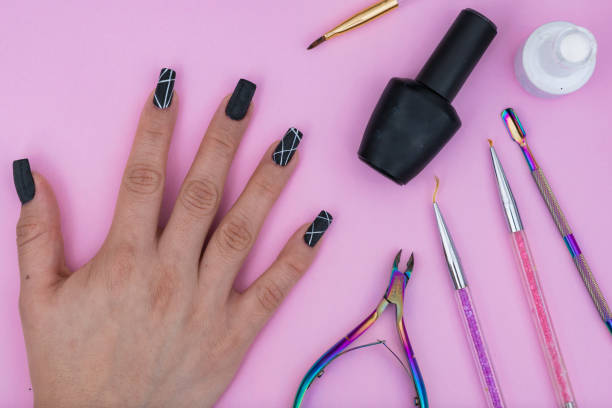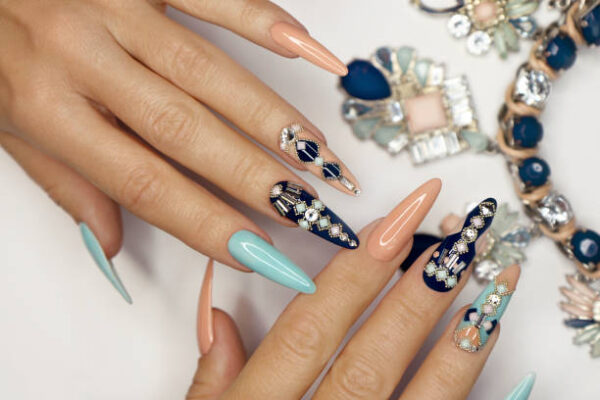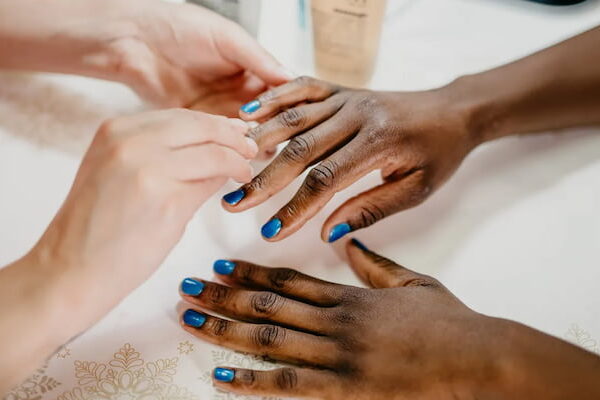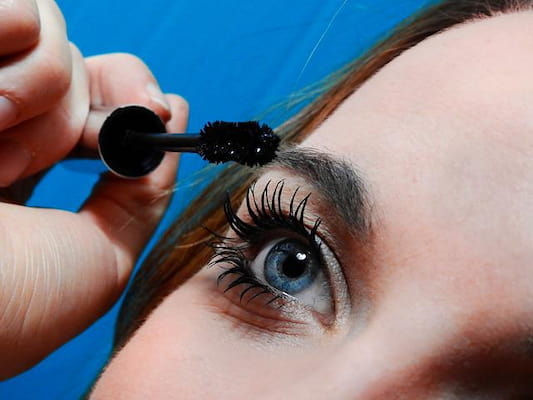Under pressure, polygel nails can maintain their shape and are strong and flexible. They are perfect for people who work with their hands or lead active lives because of their high level of durability.
However, the main disadvantage of Polygel nails is that they are not as long-lasting as acrylic nails. However, there are some methods you can use to extend their lifespan.
Table of Contents
What is PolyGel for Nails?
The best qualities of acrylic and gel nails have been combined to create polygel. Consequently, you benefit from the best of both worlds.
Your nails will be in absolute safety. Polygel won’t in any way harm your nails if the proper application procedures are used.
Polygel is incredibly user-friendly, which is another impressive quality. Because it won’t set until your technician cures the nails.
Consequently, the entire process won’t need to be rushed by your nail technician. They can take as much time as they need to give you the best-looking nails possible.
How Long Do Polygel Nails Last?
Your manicure’s longevity will depend on how well you take care of your nails, just like with any nail set. However, a typical set of Polygel nails can last up to 4 weeks, with the average lasting about 3 weeks.
They are less likely to break or chip because polygel is lighter and more flexible than acrylic. However, it all depends on your habits and pursuits. Normal wear and tear are likely if you engage in a hobby or job that requires constant hand use.
Does Polygel Last Longer Than Acrylic?
Both Polygel and acrylics don’t require removal for fills due to their somewhat similar properties. Both Polygel and acrylics can typically be buffered down and simply filled in with more product unless there is significant damage. Although they don’t necessarily last as long as acrylic, polygel, and acrylic do last similarly.
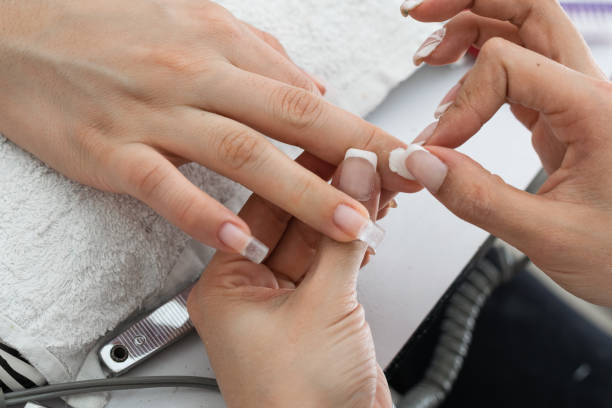
Tips to Make Your Polygel Nails Last Longer
Correctly Prep & Clean Your Nails
The most crucial thing you can do to extend the lifespan of your Polygel Nails is to correctly clean and prep your nails before using any product.
To prep your nails you need to:
1- To start, take off any nail polish or acrylics that are currently applied to your nails.
2- Second, use a cuticle pusher to push your cuticles back and align them with the back of your nails.
If you apply Polygel Nails without taking care of your cuticles, some of the Polygel will go on the cuticle area rather than your nails directly, which can cause lifting.
3- Third, file your nails: Use a medium-grit nail file to trim your fingernails. Your nails become rougher and lose their sheen as a result, which will help the Polygel adhere to them better. The cuticle skin that could cause the lifting of your nails can be removed by filing your nails.
You can use a 180-grit nail file; to see how much one costs on Amazon, click here.
4- After filing your nails, clean them with either acetone or rubbing alcohol.
This helps to get rid of any dirt and oil that may be on your nails and stop the Polygel from sticking.
Use a Nail Primer and a Dehydrator
If your manicures are prone to lifting, nail primers and dehydrators are crucial for long-lasting manicures.
Dehydrators are used to remove any moisture and oil from the nail plate. The Polygel’s ability to adhere to your nails can be hampered by both oil and moisture.
Nail Primers make small microscopic scratches on your nails to roughen them up. This makes it possible for the Polygel to adhere to your nail plates and lengthen their durability and adhesion.
Use a Gel Base and Top Coat
Your Polygel Nails can be made more resilient and glossy with the use of a good gel base and top coat.
Gel Base Coat – bonds firmly with your nail plate whilst at the same time creating a nice sticky layer for your Polygel to adhere to.
Gel Top Coat – creates a hard and durable glossy layer over your Polygel Nails preventing them from:
• Getting scratched easily
• creates a buffer layer to protect the Polygel from contact with harsh chemicals that could cause it to degrade more quickly.
Invest in a Good Brand of Polygel
It is possible to find Polygel in a huge range of different brands. And a lot of these brands are extremely affordable but of poor quality, so they wouldn’t last very long.
Thus, since high-quality brands are more likely to be long-lasting and have a great appearance, we advise sticking with them.
Avoid Exposing Your Polygel Nails to Harsh Chemicals
The next piece of advice I have is to keep your Polygel Nails out of harsh environments like the heat from cooking, the strong detergents from cleaning, and the pesticides from gardening.
Your Polygel nails will typically become brittle, faded, and more prone to lifting under these circumstances.
So we recommend wearing strong rubber gloves when cleaning, cooking, or gardening to protect your Polygel nails
Ensure That Your Polygel Nails Are Cured Completely
Uncured polygel will be very weak and have a hard exterior and a soft interior. This implies that your Polygel will be very vulnerable to breaking.
Use Nail Forms Instead of Tips
The durability of polygel nails is generally higher when they are applied using nail forms as opposed to nail tips.
Polygel nails have a stronger adhesion to your natural nails thanks to nail forms, which tend to bond completely to the entire nail plate and increase the longevity of your polygel nails.
While nail tips rely on nail glue, which is more prone to lifting.
Final Thought
A typical set of Polygel nails can last up to 4 weeks, with a 3-week average.
Compared to acrylic nails, Polygel nails are not only much healthier but also thinner, lighter, and more comfortable. Despite the slight price increase, Polygel nails are said to be worth every penny, provided you maintain and care for them properly afterward.

